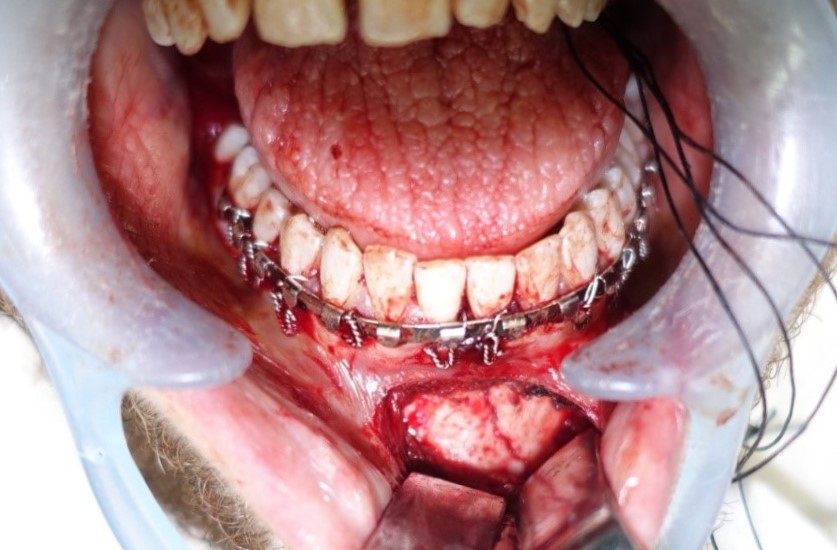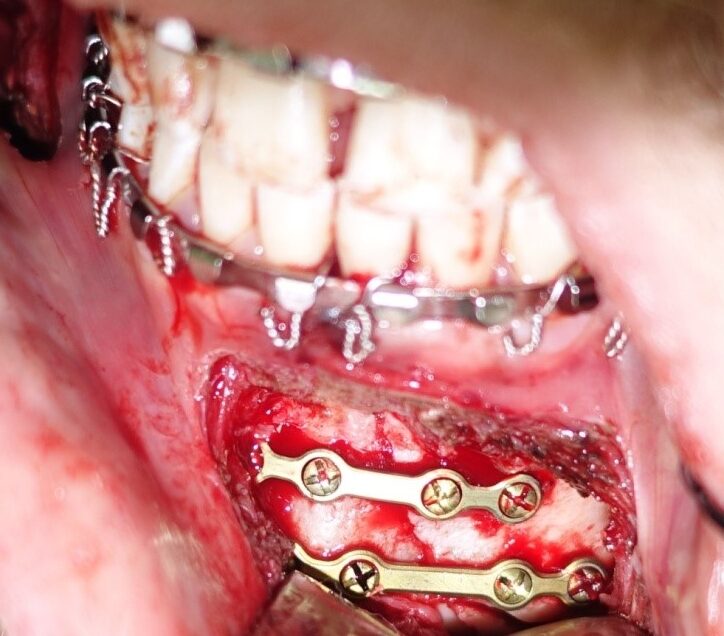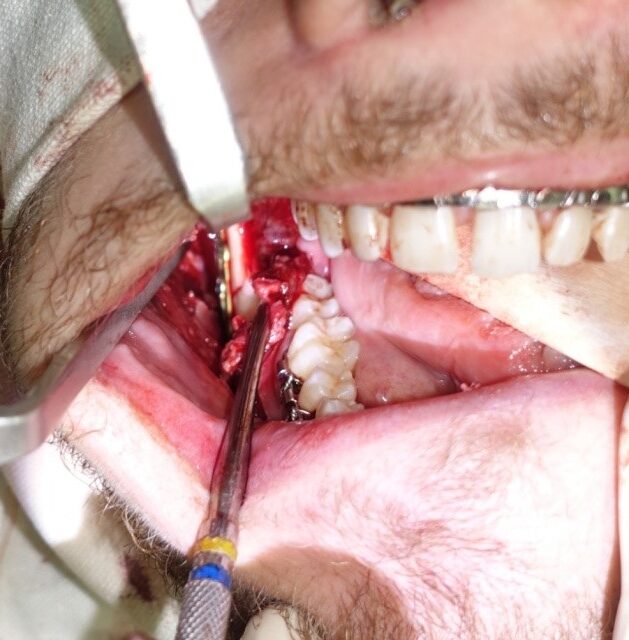A jaw fracture, also known as a mandibular fracture, is a break or crack in the jaw bone. Symptoms, diagnosis and prevention are discussed here. This blog discusses the jaw fracture surgery in this 20 year old patient.
CONSERVATIVE MANAGEMENT VS. SURGERY
Treatment for a jaw fracture depends on the severity of the fracture and the resulting misalignment. It ranges from conservative management to aggressive surgical management. In cases where there is minimal break and misalignment in the bone, conservative measures such as limiting mouth opening, placing of an elastic bandage, and liquid or soft diet for a few weeks may suffice.
However, if the jaw fracture is misaligned, surgery may be required. Surgery may range from only applying interdental wiring to stabilize favorable mandible fractures, to open reduction and internal fixation (ORIF) using titanium plates and screws. Surgery is usually done under general anesthesia.
Back to our patient..

Our patient was scheduled for an operation: open reduction and internal fixation of mandibular fractures using titanium plates under general anesthesia.
On the left is a picture intraoperatively. This is an interdental wiring procedure, a first step in the reduction of the fractures. Note that the fracture on the front of the jaw has been aligned.
After fixing the bite, the next step is stabilizing the fractures using plates and screws. The surgical cuts to do this are mostly inside the mouth. The only external incision on the face was a 2 MILLIMETER incision on the right cheek. This was done using specialized tools creating only minimal on the outside cheek which went through to the angle of the jaw.


Titanium plates were then shaped according to the jaw contour and screws were placed to stabilize the fracture, taking care to align the patient’s bite. The mouth incisions were then closed with absorbable sutures.
After Jaw Fracture Surgery
After the jaw has been properly aligned and stabilized, the patient was advised to eat a soft diet. He was also instructed to avoid any activities that could cause further damage to the jaw for several weeks. Bone healing typically takes 6 to 8 weeks. Physical therapy may be recommended to help regain jaw function and strength.
It’s important to see a qualified ENT doctor if you suspect you have a jaw fracture. Appropriate prompt diagnosis is necessary so proper treatment may be done.
Experience expert ENT surgical care tailored to your needs.
Book now to schedule your appointment with a skilled ENT surgeon near you and take the first step towards a healthier you.
Your well-being is our top priority.

